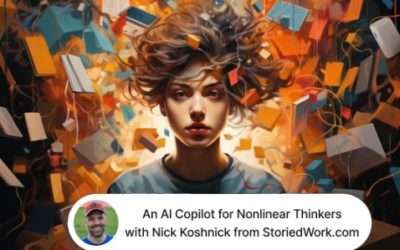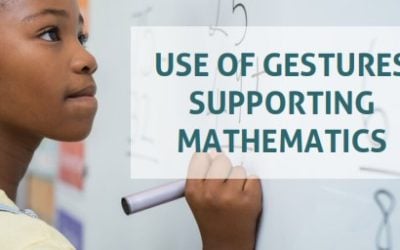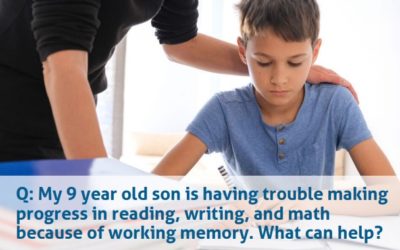What many tutors will have noticed is that many structured literacy strategies require frequent repetition because they focus remediation on tasks that are especially difficult for many dyslexic students – the automatic identification of the phonemes that make up words.
Not the Standard Track: Extracurriculars and Work Experience [Premium]
There are many ways of getting from A to Z and many of them don’t require a 4.0 GPA and elite school tracks. Dyslexics as a group may have trouble following the traditional route to their dream career because many of their academic strengths are late-blooming.
Research Updates in Gifted Dyslexics [Premium]
Research into the Gifted Dyslexic population remains scarce, but there have been a few articles in the last years that may be helpful in identifying and supporting these students. One difficulty interpreting data from twice-exceptional research is that studies that focus solely on students with unevenness in scores may combine gifted dyslexic student scores with those who are gifted and on the autism spectrum. Because fluid reasoning scores may be very different between gifted and autistic populations, it’s difficult to draw conclusions for either group. As an example, Danika Maddocks in Gifted Child Quarterly undertook a review of 3891 K-12 school children, but failed to distinguish 2e-LD subpopulations. As a result, when she concluded that twice-exceptional LD students could outperform non twice exceptional students in […]
Math and Sciences: Symbols and Dyslexia [Premium]
It’s important to be aware that although many dyslexics have natural strengths in math reasoning and scientific thinking, these strengths may not be evident during K-12 education because of challenges with symbol confusion and polysemous or multiple meaning words in math and science. As a result, even students with high potential in science and math may find themselves underperforming in these subjects. Few specialty teachers receive training in ways to support their dyslexic students, so students are left on their own to figure out lessons and homework. THE PROBLEM WITH SYMBOLS Symbols can be a great challenge to dyslexic students because of a common weakness in snapshot picture or eidetic memory. The same difficulty that makes it so hard to take a picture of spelling […]
Q: How Can I Modify Curricula for Dyslexic Students Without Compromising Standards? [Premium]
We were asked: How can I modify the curricula for dyslexic students without compromising standards? MODIFICATIONS VS. ACCOMODATIONS Usually, when 504s or IEPs are discussed, accommodations are mentioned more often than modifications. Accommodations refer to changes in the way students access content and demonstrate what they know. So for instance, an accommodation for dyslexic students might include extra time, the option to use text-to-speech, or a human reader for tests so that assessment more accurately reflect what students know. Modifications, on the other hand are changes in the content of the curriculum, homework, or what a student is expected to learn. Examples of modifications in a curriculum for dyslexic students might include fewer problems, an option to use spellcheck and a word processor for […]
Nick Koshnick: StoriedWork.com An AI Co-Pilot for Non-Linear Thinkers
Nick Koshnick is a Stanford PhD and seasoned entrepreneur who raised money from companies like Google and Andreessen, and then sold the company.. He's also dyslexic. Now, he's co-founded StoriedWork.com with business partner Frank Corrigan. Storied has been nicknamed...
Use of Gestures Supporting Mathematics
There's an interesting paper by Hord and colleagues that showed how a secondary math teacher supported a student with LD and math anxiety using gestures. Gestures can sometimes be used to help remember and retrieve math actions and relationships in long-term memory....
What Can Help with Working Memory Limitations?
Q: My 9 year old son is having trouble making progress in reading, writing, and Math because of working memory. What can help? Working memory is a type of memory that allows us to temporarily hold information 'in mind' to be used for other cognitive tasks. Some people...
The Gift of Seeing People and Events from Multiple Perspectives [Premium]
There is a talent cluster that we’ve seen among dyslexics in diverse backgrounds, and it’s a gift of being able to see people and events from multiple perspectives. Within the MIND strengths framework, this could be in I for Interconnected Thinking, N for Narrative Thinking, or D for Dynamic Thinking. It is a gift to be able to visualize or or imagine a simulation of how people and events can be seen from different perspectives, and it allows empathy for people and situations that others might miss, or a connection of events that others see separately, and predictions that provide positive opportunities for bettering one’s situation or the world, or staving off problems. You might notice children who seem unusually empathetic or observant about the […]
Are There Any Group Activities That Benefit Dyslexic Students? [Premium]
Like non-dyslexic students, there can be a wide variations that exist between how students enjoy group activities. In general, extroverts love group activities, while introverts less so. But there are benefits from the selection of some activities that especially benefit dyslexic students. CREATE A POSITIVE CLASSROOM CULTURE FOR DIFFERENT LEARNERS First of all, it’s helpful to have a classroom culture that allows flexibility in learning and accepting of differences. Students can be encouraged to take a different approach while solving problems and demonstrating knowledge. A discussion about differences in learning at the beginning of the year can make students who know they learn differently, feel more welcome. Some teachers may also model their openness to solving problems or learning a different way. Offering students options […]
Using AI and CHATGPT in Higher Education [Premium]
Here’s a brief summary of what entrepreneur Stan Gloss shared about using Chat GPT in Higher education: Embracing Assistive Technology: Stan advocates for the use of generative AI and other assistive technologies as legitimate tools to support learning and work, especially for those with dyslexia. He uses generative AI to create outlines and formulate questions for writing assignments, which helps him overcome the initial challenge of starting with a blank page. Generative AI for Academic Work: Stan discusses using generative AI, specifically ChatGPT, to aid in the writing process by generating outlines and prompting questions,.
Personalized Learning Tools: – Voice Dream Reader: An app that reads texts aloud, which is vital for individuals who struggle with reading. – ChatGPT: […]Teaching Geometry to Dyslexic Students [Premium]
“Henry Winkler… got his diploma in the mail only after taking the same geometry class eight times in a row over the course of four years, during the summers and regular school semesters, and finally passing with a D-.” — Alia Wong, “The MisEducation of the Fonz”, Atlantic Monthly It’s surprisingly hard to find research publications on teaching geometry to dyslexic students. One reason, suggested by Kay and Yeo in their book Dyslexia and Maths, is that numerical difficulties are more common among dyslexic students than geometric ones. They cite one study of 92 students followed over four years in which 50% failed to meet standards in Number Work, compared to 27% who missed for “Measure, Shape and Space.” That being said, because geometry is […]

![MIND Strengths for Tutors: Material Reasoning [Premium]](https://www.dyslexicadvantage.org/wp-content/uploads/2024/04/Material-Reasoning-Premium-2-400x250.jpg)
![Not the Standard Track: Extracurriculars and Work Experience [Premium]](https://www.dyslexicadvantage.org/wp-content/uploads/2024/04/Extracurriculars-and-Work-Experience-Premium-1-400x250.jpg)
![Research Updates in Gifted Dyslexics [Premium]](https://www.dyslexicadvantage.org/wp-content/uploads/2024/03/Research-Updates-in-Gifted-Dyslexics-A-400x250.png)
![Math and Sciences: Symbols and Dyslexia [Premium]](https://www.dyslexicadvantage.org/wp-content/uploads/2024/03/Math-and-Sciences-1-400x250.jpg)
![Q: How Can I Modify Curricula for Dyslexic Students Without Compromising Standards? [Premium]](https://www.dyslexicadvantage.org/wp-content/uploads/2024/03/Modify-Curricula-for-Dyslexic-students-400x250.jpg)



![The Gift of Seeing People and Events from Multiple Perspectives [Premium]](https://www.dyslexicadvantage.org/wp-content/uploads/2024/02/The-Gift-of-Seeing-People-and-Events-from-Multiple-Perspectives-da-400x250.jpg)
![Are There Any Group Activities That Benefit Dyslexic Students? [Premium]](https://www.dyslexicadvantage.org/wp-content/uploads/2024/02/Group-Classroom-Activities-400x250.jpg)
![Using AI and CHATGPT in Higher Education [Premium]](https://www.dyslexicadvantage.org/wp-content/uploads/2024/02/AI-and-dyslexia-400x250.jpg)
![Teaching Geometry to Dyslexic Students [Premium]](https://www.dyslexicadvantage.org/wp-content/uploads/2024/02/Teaching-Geometry-to-Dyslexic-Students-400x250.jpg)













